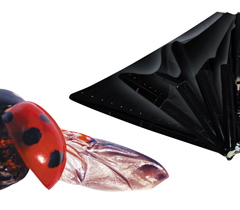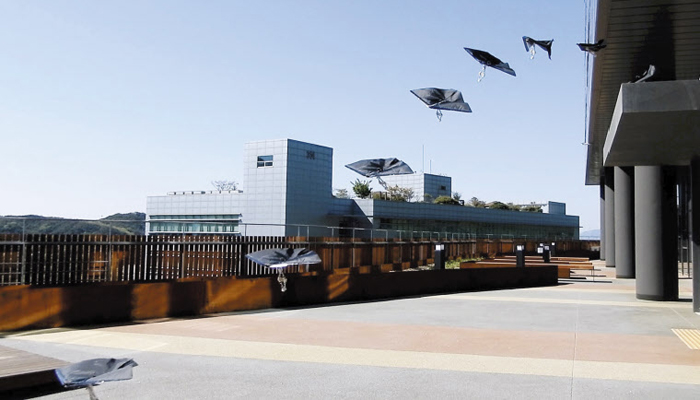Department News
[The Chosun Ilbo] Prof. Kyu-Jin Cho’s Research Team Creates Origami-Inspired Flying Robot
The Chosun Ilbo
[IF] Robot Wings Inspired by Ladybug
Inspired by the thin wing vein of ladybugs
A 33㎝-long robot wing unfolds in less than 0.5 seconds…
Potential to be used in military drones

Ladybugs walk on leaves with tiny feet in small steps, but it’s a different story when they fly. In one tenth of a second, they spread their wings and fly off to the sky. Inspired by these creatures, a Korean research team designed a robot that can spread its wings in an instant.
On April 15th, a research team led by Professor Kyu-Jin Cho of Seoul National University Dept. of Mechanical Engineering announced that “a flying origami robot inspired by the wing vein of ladybugs.” The wing vein refers to the structure of the thin wing of an insect. The research was published on the cover of Science Robotics.
Origami is widely used in robotics, since it allows a complex structure to be stored in limited space. It is often used in space exploration for the purpose of carrying a variety of equipment in the limited space of a rocket. For example, satellites and solar panels of planetary rovers are folded for storage.
Prof. Cho’s team took inspiration from ladybugs in order to overcome the constraints of origami structure. The wing of a robot can be created like an origami structure, but in order for it to unfold in an instant, an additional spring structure is required to generate elastic energy. However, a ladybug wing doesn’t have such a structure. The research team focused on the fact that the wing vein operates like a spring. “The elliptical structure of the wing vein works like a spring. It locks down the wing, then later releases it,” said Prof. Cho. “So we created the same structure on the edge of the robot’s wing to give it elastic energy.”

A ladybug-inspired robot jumping off and flying from a high point. It is able to release its wings in an instant, with the elliptical structure implemented on the edge of its wings, just like the wing vein of a ladybug. /SNU
Experiments showed that a robot wing with this type of structure can be folded into a size as small as one-eighth of its original surface area, and that it takes 0.116 seconds to unfold. The wing of a ladybug is less than 1cm in length, but the robot wing of 33cm could be released to its full size in just 0.466 seconds. The structural integrity proved to be more than sufficient as well, withstanding up to 150 times its weight. Using this method, the research team developed a robot that jumps like a grasshopper and glide in the air from the highest point, instantly releasing its wings.
Also, this robot does not make any noise when it jumps or unfolds its wings, suggesting the potential to be used for military purposes. “Current surveillance drones are very loud, which means it can be hard for them to get close to enemy bases,” said Prof. Cho. “We can use a drone to approach a certain point, then drop the winged robot for closer reconnaissance.”
The research was conducted at the SNU BioMimetic Robot Research Center. It was funded by the Defense Acquisition Program Administration, Agency for Defense Development, and the Korea Institute of Science and Technology (KIST).
Copyright ⓒ The Chosun Ilbo & Chosun.com
Link to article : http://news.chosun.com/site/data/html_dir/2020/04/16/2020041600394.html

